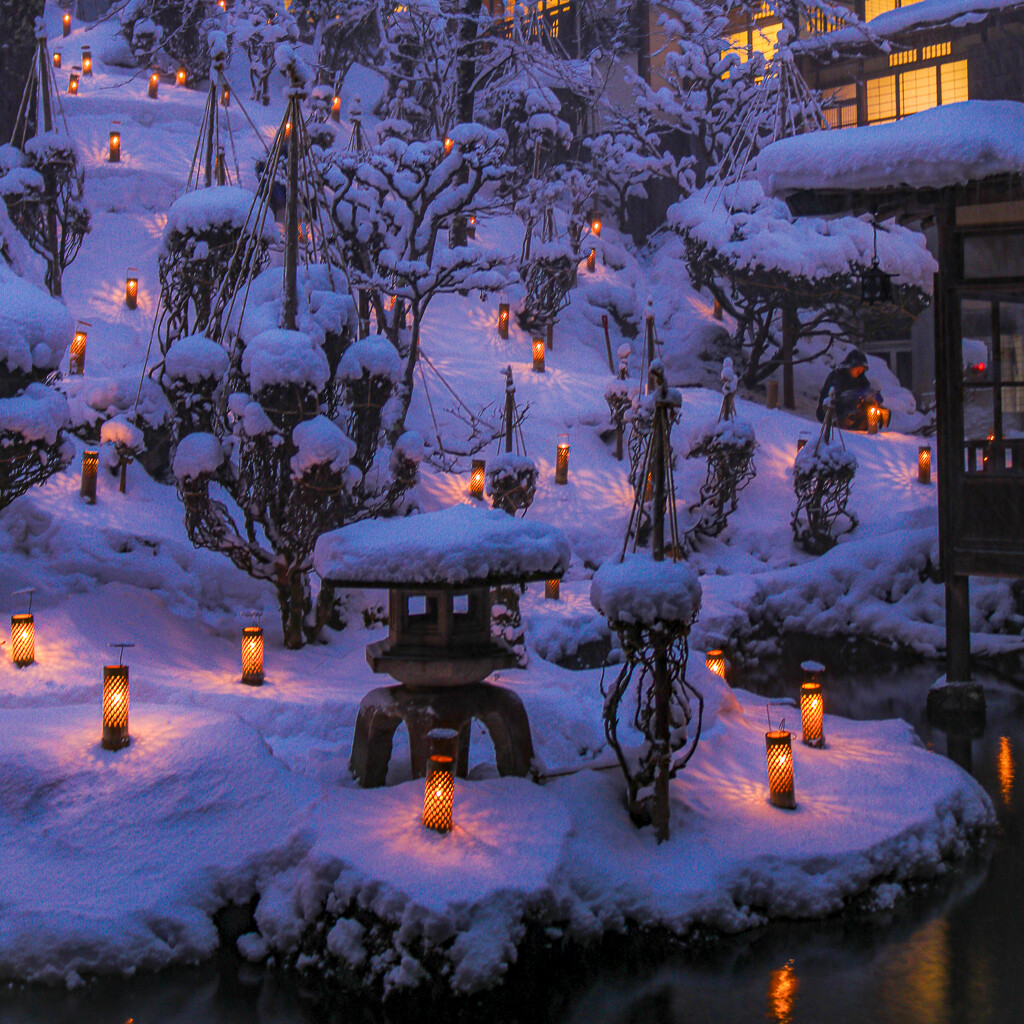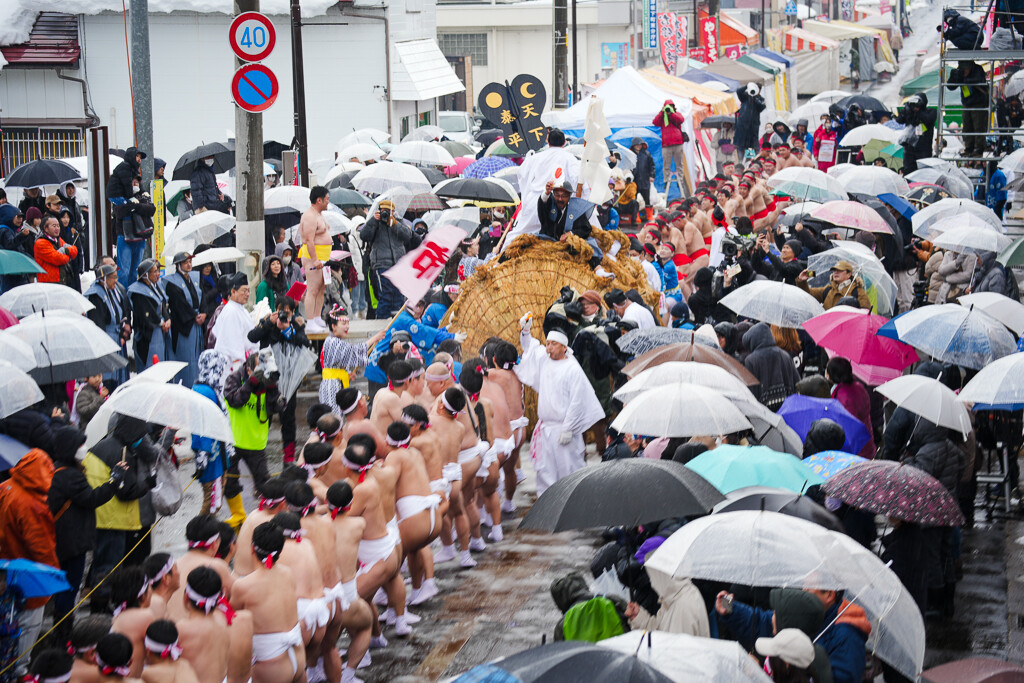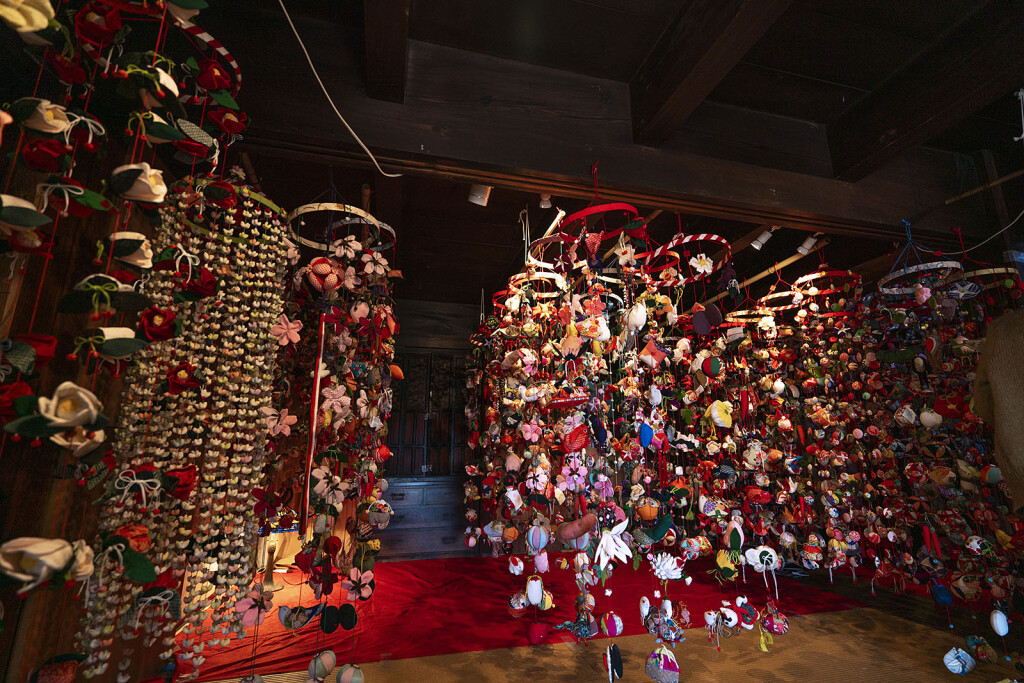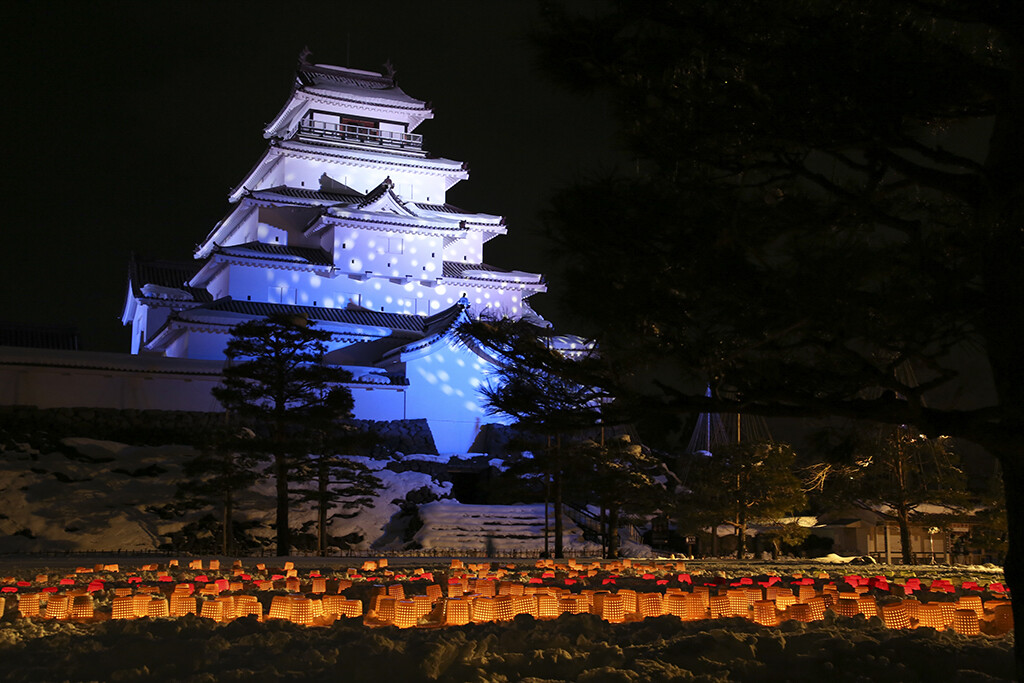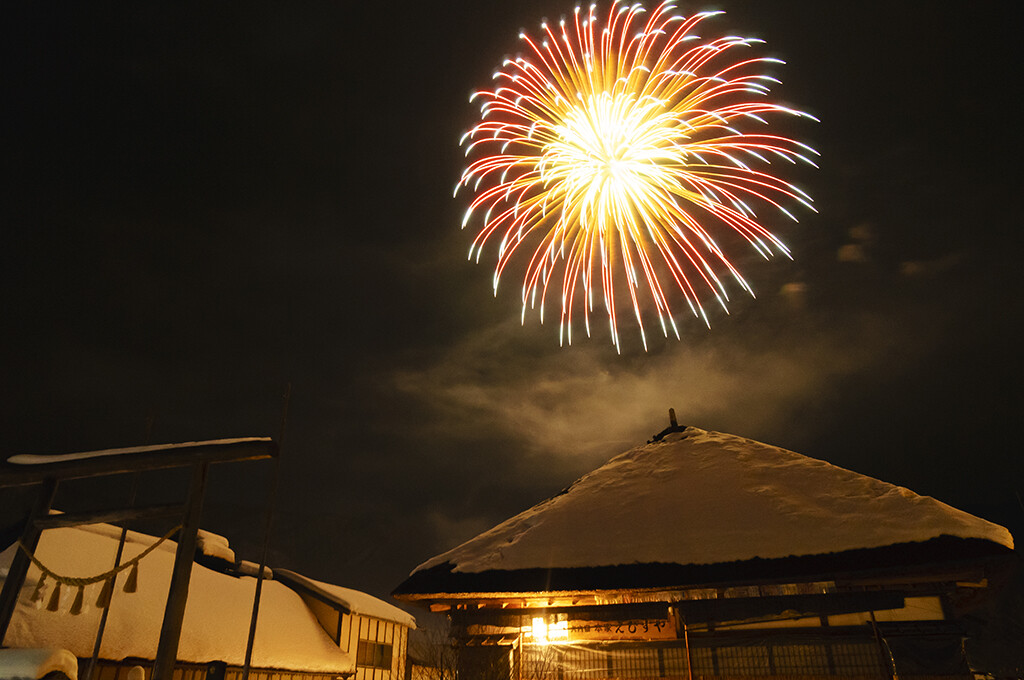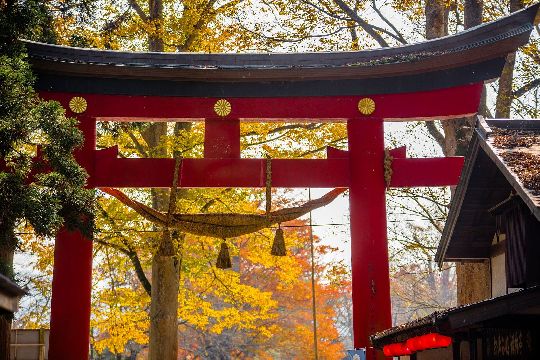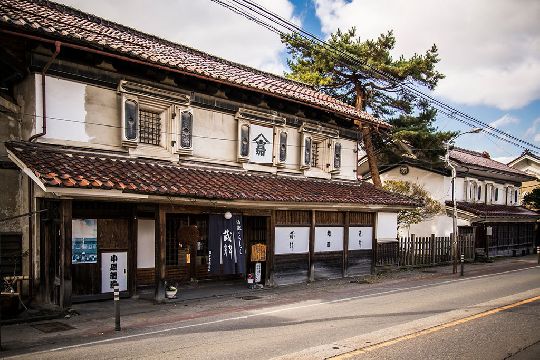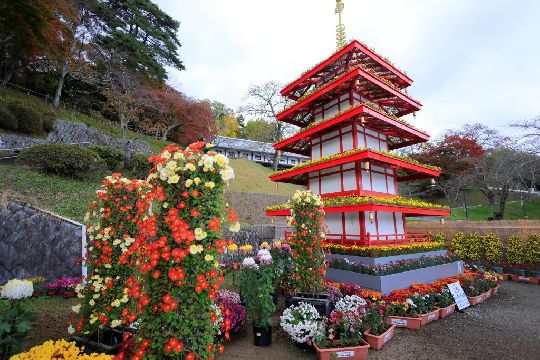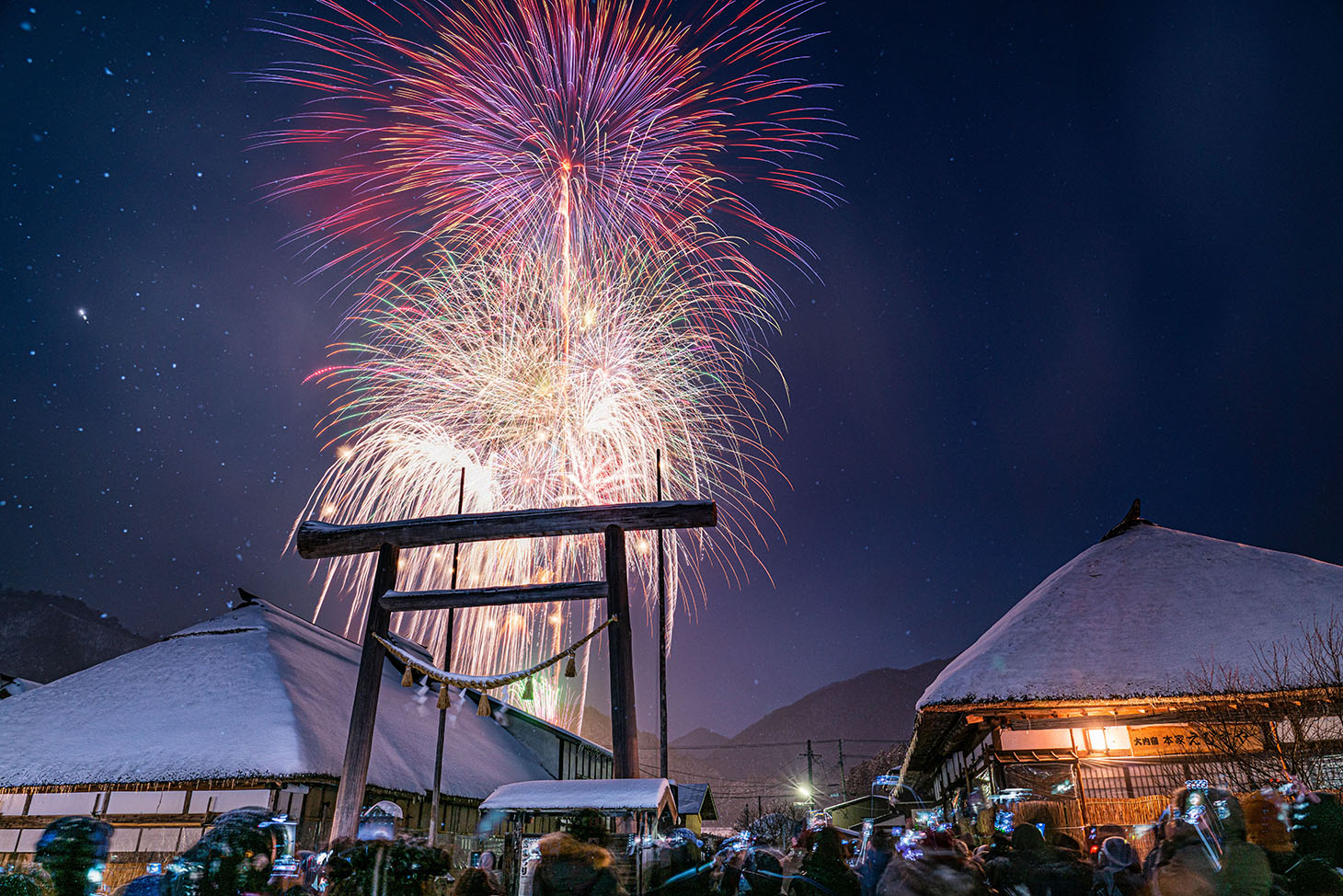
Visit this page for up-to-date information about Fukushima's festivals.
Winter is an excellent time to visit Fukushima -- great skiing, stunning snow scenery, and of course, traditional winter festivals. If you're looking to find out which winter events are right for you, see below for all the details for the upcoming 2026 editions.
Visit the individual destination pages for more information.
From 20 December 2025: Higashiyama Onsen Candle Festival
The earliest of the winter attractions to open, the Candle Festival at Higashiyama Onsen runs for three months from mid-December through to the end of February. The candles in this charming onsen town are illuminated for 90 minutes every evening, making for a pleasant atmosphere on an evening stroll.
(Candles are lit 16:30-18:00 in December and January, 17:00-18:30 in February)
Given its dates, the Candle Festival combines well with visiting other winter festivals on this list, regardless of whether you’re staying in Higashiyama Onsen.
Address: Higashiyama Onsen, Aizu-Wakamatsu City
7 January: Nanokado Hadaka Mairi Festival
Translating roughly as, ‘the naked shrine visit on the 7th January’, Nanokado Hadaka Mairi sees a group of men in nothing but loincloths climb a hemp rope to the top of Enzoji Temple. To get there they must race up the 113 stone steps to the main temple building in the freezing cold, and visitors are able to participate (advance notice is required).
The festival traces its roots back to an ancient legend, telling of a princess who received a wish-granting jewel from a river dragon to tide against crop failures, and a community who banded together on the night of the 7th to prevent the dragon spirit from taking it back. To this day the festival is a rowdy display of hope and community.
If you’re in Yanaizu for the festival, this is a great chance to see one of the prefecture’s most underrated towns: the Chansey Lucky Park is a winner, and since Enzoji is the birthplace of the akabeko legend, you’ll find merchandise of the red cows wherever you look.
Address: Enzoji Temple, Jikemachi-ko 176, Yanaizu Town, Kawanuma District, Fukushima Pref. 969-7201
10 & 14 January: Bale-Pulling Festivals, Aizu-Misato & Aizu-Bange
This raucous pair of winter festivals are practically twins for their similarity, both headlined by groups of locals fighting over a great hay bale attached to a massive rope at either end. It's said that the result of the tug-of-war will predict the year's fortunes, whether via a great harvest or prosperous business.
Both festivals feature the tug-of-war in addition to a plethora of festival food stalls and performances from local special interest groups like dancing or taiko drumming. The Aizu-Bange festival is especially notable for its men participating in only loincloths, despite the festival usually taking place on snowy roads.
With the festivals taking place in suburban towns within Aizu, they combine well with a trip to see the winter scenery at Tsurugajo Castle or Ouchi-juku.
Late January / early February: Iwaki Tsurushi-bina Matsuri
Held in the Nakanosaku district of Iwaki in the south-east of the prefecture, this is the best time to visit this port town thanks to its colourful displays of handmade dolls and folk arts made with chirimen fabric (which is used in kimonos). The main display takes place at Seikokan, where over 3,000 fabric dolls hang from under the eaves of the old traditional house.
There are also food and merchandise stalls that run primarily on Saturdays and Sundays.
Exact dates will be updated as information becomes available.
Address: Nakanosaku, Iwaki City (Map)
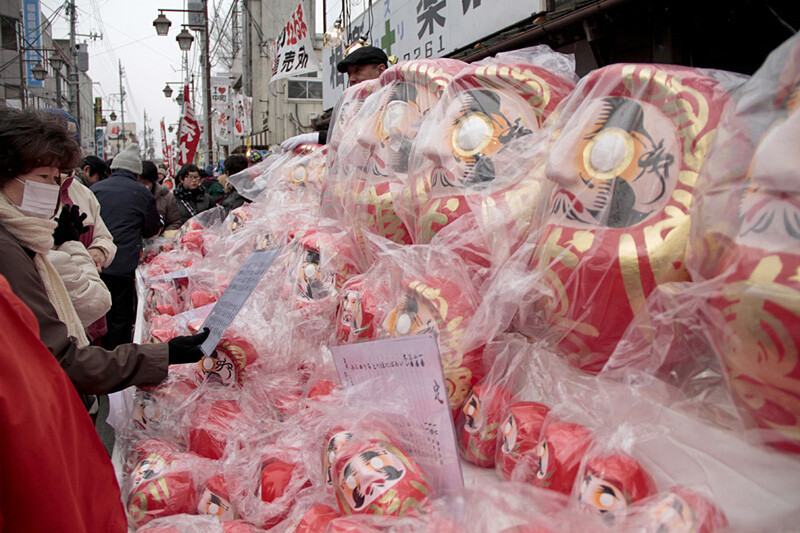
11 February: Shirakawa Daruma Market
Daruma, traditional good luck talismans, are a symbol of Shirakawa City, with two major workshops where visitors can watch craftsmen at work. Shirakawa daruma vary slightly in design from the Tohoku-style daruma sold further north in Fukushima City or the art village at Miharu.
At this event, held yearly on 11th February, there is a festival-esque atmosphere with hundreds and thousands of visitors turning up to peruse over 700 stalls. Since daruma come in 18 sizes and a variety on display, it’s easy to find a daruma that suits you – tradition says you make a wish while the daruma has only its left eye filled in (or you fill it in while making the wish), and then you fill in the right eye when the dream is fulfilled.
Address: The main street in front of Shirakawa Station that runs parallel to the train line.
13 & 14 February: Aizu Painted Candle Festival
The start of a weekend of winter events, Friday 7th February is the first night of the Aizu Painted Candle Festival – tens of thousands of candles in artisanal wooden cases, bamboo holders and paper boxes that light up Tsurugajo Castle and the traditional garden down the road at Oyaku-en.
The main time to see the candles is between 17:30 and 20:30, where visitors can not only enjoy the beautiful evening views but appreciate the time and craftsmanship involved in making each candle.
Tsurugajo Castle: 1-1 Otemachi, Aizuwakamatsu, Fukushima 965-0873
Oyaku-en Garden: 8-1 Hanaharumachi, Aizuwakamatsu, Fukushima 965-0804
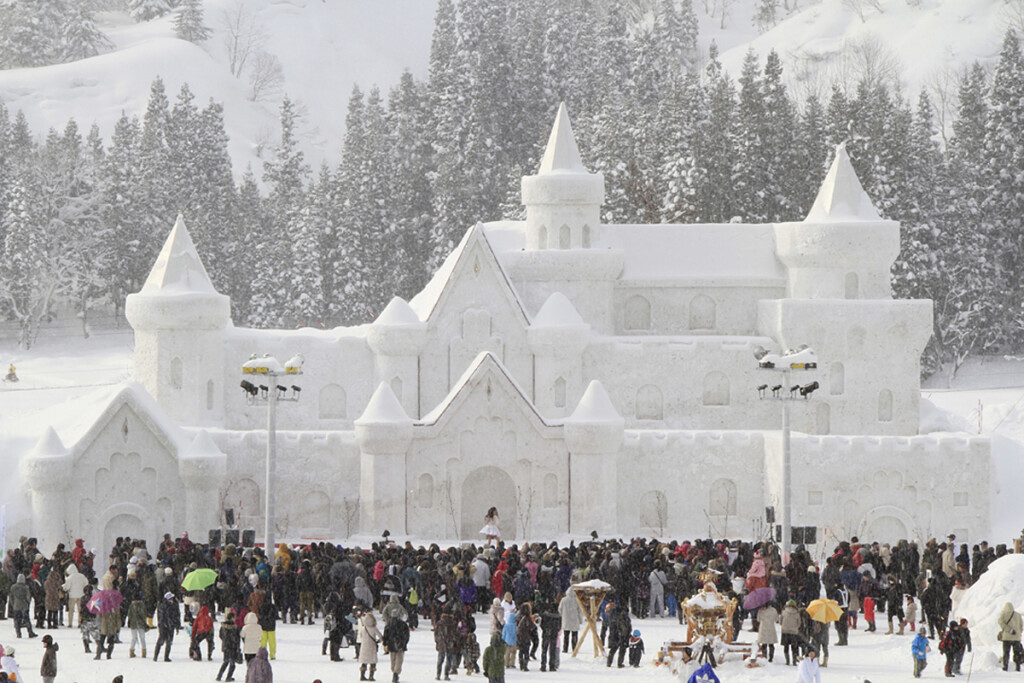
14 & 15 February: Tadami Snow Festival
Taking place on the same weekend as the Ouchi-juku festival, the Tadami Snow Festival is a charming local festival that attracts over 20,000 visitors a year. It’s most famous for its large snow sculptures, which are illuminated when it gets dark, in addition to fireworks displays.
The main festival takes place on the 8th and 9th, with some smaller festivities on the night of the 7th.
Much like Ouchi-juku, the Tadami Snow Festival features music performances, sales of local crafts and food stalls.
Address: In front of Tadami Station, Tadami Town, Minamiaizu District, Fukushima Pref. 968-0421
14 & 15 February: Ouchi-juku Snow Festival
Mochi thrown from rooftops, wood-cutting competitions, igloos, traditional performing arts, fireworks, yosakoi dancing, soba noodles eating contests – the Ouchi-juku Snow Festival casts a wide gamut of activities in addition to its beautiful scenery. The thatched roofs of the hamlet covered in snow make for splendid photographs.
Local vendors sell merchandise directly from their houses, and during the winter season there are food stalls selling chargrilled dishes and snacks. For many people in Fukushima, this is the festival to prioritise every winter.
Address: Ouchi-juku (Yamamoto, Ouchi, Shimogo Town, Minamiaizu District, Fukushima Pref. 969-5207)
Looking for more tips about travelling in Fukushima this winter? Check out our full guide.
